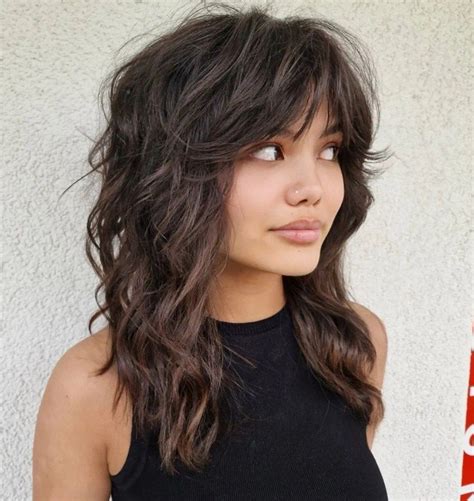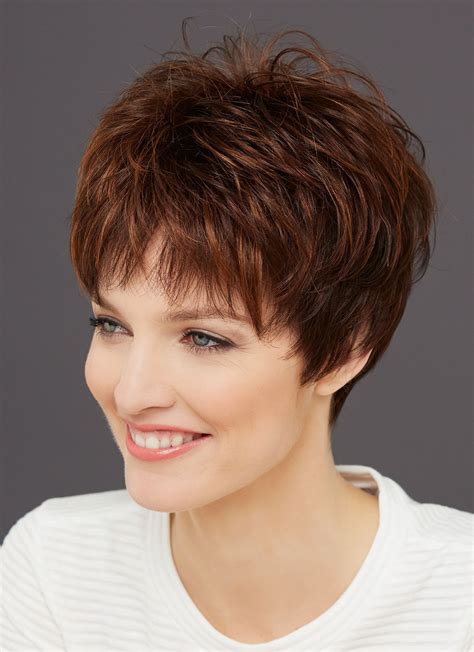Table of Contents
– Benefits of Wearing a Wig
– Top 50+ Wig Styles for Women Over 60
– How to Choose the Right Wig
– Common Mistakes to Avoid
– Frequently Asked Questions

Benefits of Wearing a Wig
As we age, our hair undergoes natural changes that can affect its volume, texture, and color. Wigs offer a versatile and stylish solution for women over 60 who want to:
- Enhance hair volume and coverage
- Experiment with different hair colors and styles
- Conceal hair loss or thinning
- Add glamour and confidence to their appearance
Top 50+ Wig Styles for Women Over 60
There’s a wig style for every face shape and preference. Here are 50+ popular options to consider:
| Style | Description |
|---|---|
| Short Pixie | A chic and modern style with short, layered hair |
| Bob | A classic style that frames the face with shoulder-length hair |
| Long Layers | Adds volume and movement to hair, with long layers falling around the shoulders |
| Curly Shag | A playful and textured style with short, curly layers |
| Updo | An elegant and sophisticated style that keeps hair off the face |
| Braided Bun | A timeless style that combines braids and a bun for a polished look |
| French Twist | A classic and versatile style that keeps hair secure and stylish |
| Pompadour | A voluminous style that features a bouffant on the top of the head |
| Asymmetrical Bob | A modern bob with uneven sides that adds interest |
| Shoulder-Length Layered | A versatile style with long, layered hair that can be styled in various ways |
| Feathered Cut | A retro-inspired style with layered hair that creates a feathered effect |
| Chin-Length Bob | A simple and chic bob that ends just below the chin |
| A-Line Bob | A flattering bob with an angled cut that creates an A-line shape |
| Layered Lob | A longer bob with layered hair that adds movement and volume |
| Shaggy Layers | A carefree and textured style with long, layered hair that creates a “shaggy” effect |
| Modern Mullet | A fresh take on the classic mullet, with short layers on the top and longer hair in the back |
| Curtain Bangs | Long, parted bangs that frame the face and add softness |
| Side-Swept Bangs | Bangs that are swept to one side, creating an asymmetrical look |
| Full Bangs | Bangs that cover the entire forehead, making a statement |
| Wispy Bangs | Thin, feathered bangs that add a delicate and feminine touch |
| Blunt Bangs | Bangs that are cut straight across, creating a bold and geometric shape |
| Choppy Bangs | Bangs that are intentionally cut unevenly, creating a playful and edgy look |
| Micro Bangs | Very short bangs that end just above the eyebrows, creating a youthful and trendy style |
| Face-Framing Layers | Layers that are cut around the face to highlight and flatter facial features |
| Inverted Bob | A bob that is shorter in the front and longer in the back, creating an inverted V-shape |
| Stacked Bob | A bob with layers that are stacked on top of each other, creating a voluminous and textured look |
| Graduated Bob | A bob with layers that gradually increase in length, creating a soft and flowing effect |
| Rounded Bob | A bob with rounded layers that create a soft and feminine silhouette |
| Wavy Pixie | A pixie cut with loose, wavy layers that create a carefree and effortless style |
| Asymmetrical Pixie | A pixie cut with uneven sides that adds interest and edginess |
| Undercut Pixie | A pixie cut with shaved or undercut sides, creating a bold and modern look |
| Long Pixie with Bangs | A pixie cut with longer hair on top and bangs, creating a versatile and stylish combination |
| Tousled Shag | A shag cut with loose, tousled layers that create a relaxed and beachy vibe |
| Layered Shag | A shag cut with long, layered hair that adds movement and volume |
| Edgy Shag | A shag cut with choppy layers and a messy texture, creating a bold and rebellious look |
| Modern Afro | A short, natural Afro with defined curls that embraces individuality and style |
| Textured Afro | An Afro with textured curls that create a voluminous and statement-making look |
| Asymmetrical Afro | An Afro with uneven sides that adds interest and personality |
| Flattering Afro | An Afro cut with layers and shaping that complements and flatters facial features |
| Long Natural | Long, flowing natural hair with a variety of curl patterns |
| Layered Natural | Natural hair with long, layered curls that add movement and volume |
| Braided Natural | Natural hair styled in braids of various sizes and styles |
| Twisted Natural | Natural hair styled in twists of various sizes and styles |
| Dreadlocked Natural | Natural hair styled in dreadlocks of various sizes and colors |
| Natural Updo | Natural hair styled in an updo that keeps hair off the face and showcases its texture |
| Natural Braid-Out | Natural hair styled in a braid-out, creating soft, loose curls |
How to Choose the Right Wig
Choosing the right wig requires considering several factors, including:
- Face Shape: Oval faces can wear most wig styles, round faces suit longer styles, square faces benefit from layers and side-swept bangs, heart-shaped faces look best with long, straight styles, and diamond-shaped faces flatter with layered styles.
- Hair Texture: Match the texture of your wig to your natural hair for a more seamless blend.
- Hair Density: Choose a wig with a density that matches your own hair, or slightly thicker for a more voluminous look.
- Wig Cap Construction: There are several types of wig caps, each with its own advantages. Lace front wigs are natural-looking but require more maintenance, while capless wigs are breathable but less secure.
- Color and Style: Choose a wig color and style that complements your skin tone and personal taste.
- Cost: Wigs range in price depending on factors such as material, construction, and brand. Set a budget before shopping.
Common Mistakes to Avoid
- Choosing a Wig That’s Too Heavy: Wigs can be heavy, so avoid styles that are too bulky or thick, as they can cause discomfort.
- Not Properly Caring for Your Wig: Follow the manufacturer’s instructions for cleaning and storing your wig to extend its lifespan.
- Wearing a Wig That’s Not the Right Size: Make sure to measure your head and choose a wig that fits snugly but not too tightly.
- Using Harsh Products on Your Wig: Avoid using regular hair products on your wig, as they can damage the fibers. Instead, use products specifically formulated for wigs.
- Styling Your Wig Too Often: Over-styling your wig can wear down the fibers and shorten its lifespan. Limit heat styling and use products that protect the hair.
Frequently Asked Questions
Q: How often should I wash my wig?
A: Depending on usage, wigs should be washed every 2-4 weeks.
Q: Can I color or dye my wig?
A: Some wigs can be colored, but it’s important to check with the manufacturer first.
Q: How long can I wear my wig?
A: Wigs can last for several months or even years with proper care.
Q: Is it difficult to put on a wig?
A: Putting on a wig is fairly easy. There are numerous tutorials online that provide step-by-step instructions.
Q: Can I swim in a wig?
A: Swimming in a wig is not recommended, as it can damage the fibers.
Conclusion
Wigs offer a versatile and stylish solution for women over 60 who want to enhance their appearance and express their individuality. With so many styles to choose from, every woman can find a wig that suits her unique needs and preferences. By following the tips in this article, you can ensure that you choose and wear your wig with confidence and joy.
